Higher mortgage rates have impacted the 5-unit permit data so much that we are already at COVID-19 recession lows. Are we starting to see higher mortgage rates slow single-family permits too?
Back in 2022, the housing sector was in a full-blown recession, with existing home sales crashing and housing permits and starts falling. However, after Nov. 9, 2022, mortgage rates fell, the builders cut deals to sell more homes and single-family permits began to grow again. In today’s report, single-family permit data is slowly falling as well — this means for the first time since 2022, we have both single-family permits and 5-unit permits trending lower together.
In the chart below, red shows single-family permits and blue shows five-unit permits. There is a big gap between single-family and five-unit permits, and currently, single-family permits are getting softer.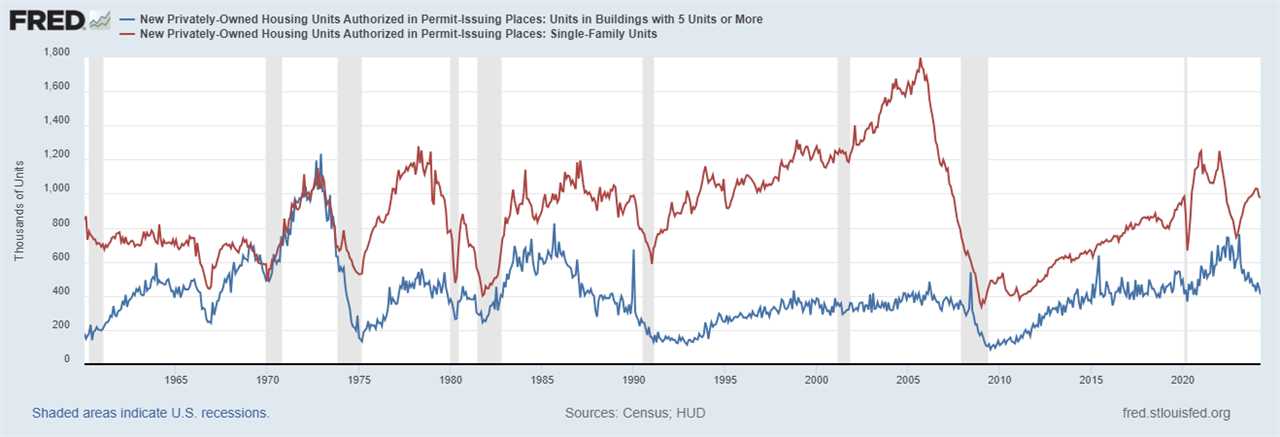
This is important to the economic cycle because construction workers tend to lose their jobs before a general recession. This hasn’t happened yet as the backlog of apartment units, which take 21 months to start and finish, has kept that labor employed. However, going out in the future, labor is at risk once those units are completed and with permits falling already, there aren’t other jobs waiting for them at the end. If single-family permits start to fall more aggressively, then that labor is also at risk.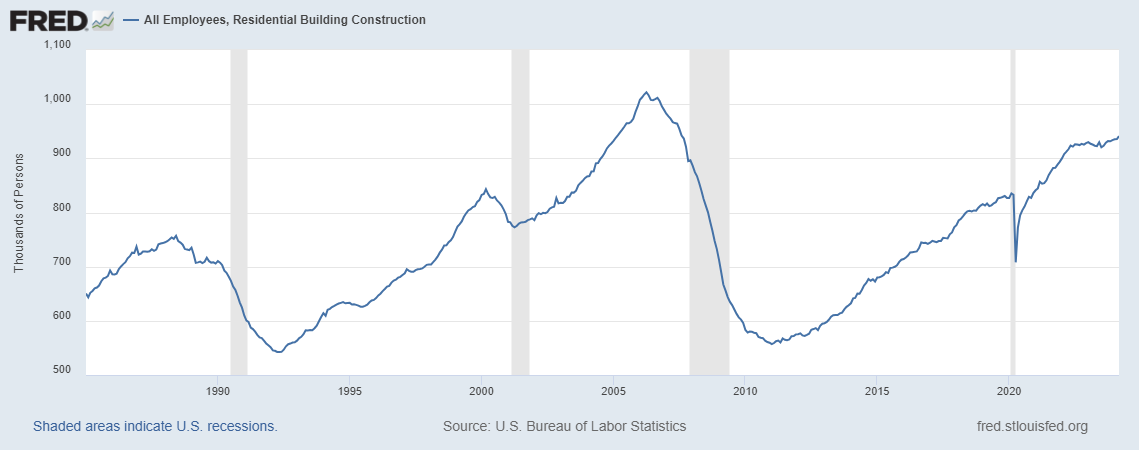
From Census: Building Permits: Privately‐owned housing units authorized by building permits in April were at a seasonally adjusted annual rate of 1,440,000. This is 3.0 percent below the revised March rate of 1,485,000 and is 2.0 percent below the April 2023 rate of 1,470,000. Single‐family authorizations in April were at a rate of 976,000; this is 0.8 percent below the revised March figure of 984,000. Authorizations of units in buildings with five units or more were at a rate of 408,000 in April.
As you can see in the chart below, we aren’t overheating on housing permits. The Federal Reserve is playing a cat-and-mouse game with rates here, trying to cool down inflation without putting the U.S. into a job loss recession, but it will be very tricky with the housing permit data.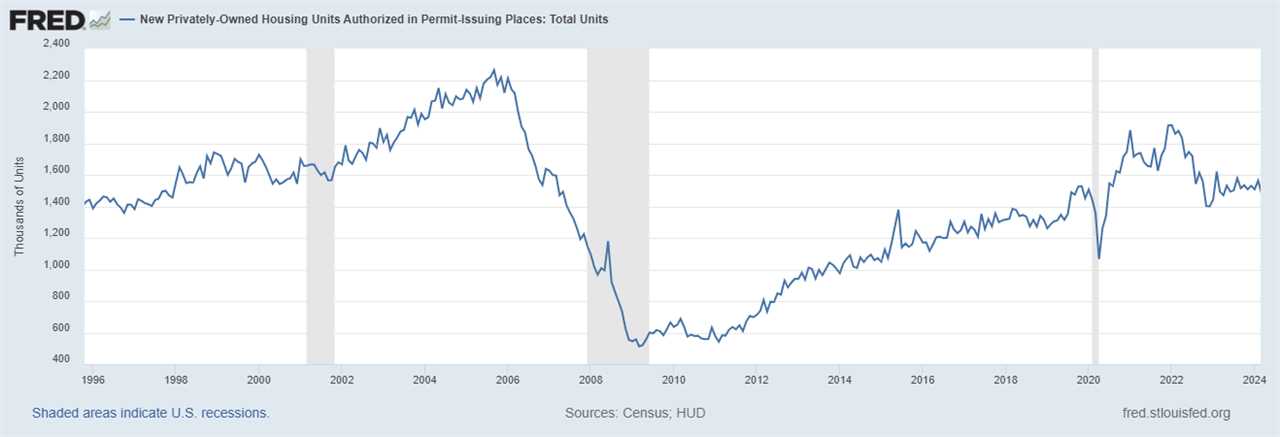
Housing Starts: Privately‐owned housing starts in April were at a seasonally adjusted annual rate of 1,360,000. This is 5.7 percent (±11.0 percent)* above the revised March estimate of 1,287,000, but is 0.6 percent (±12.3 percent)* below the April 2023 rate of 1,368,000. Single‐family housing starts in April were at a rate of 1,031,000; this is 0.4 percent (±9.5 percent)* below the revised March figure of 1,035,000. The April rate for units in buildings with five units or more was 322,000.
Like permits, housing starts aren’t doing much. If single-family and 5-unit permit data keep falling together, there is much more downside risk for future housing production and the labor that goes into that.
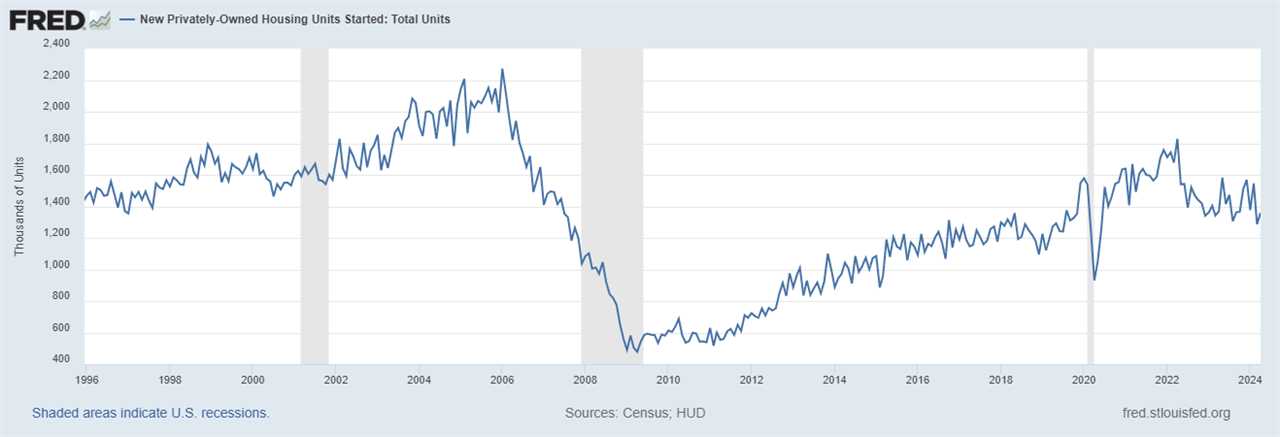
As you can see above, we now have housing permits falling on both fronts: single-family and five units. If it weren’t for the significant backlog and the builders paying down mortgage rates to sell more new homes, we would have less housing production today. However, the builders have been making this work as long as mortgage rates don’t get too high.
Recently, we have seen the builder confidence fall. This index is tilted more to smaller builders who don’t have the cash levels of big builders to pay down mortgage rates, so you can understand why this index is now falling again as mortgage rates were above 7% while this survey was taken.
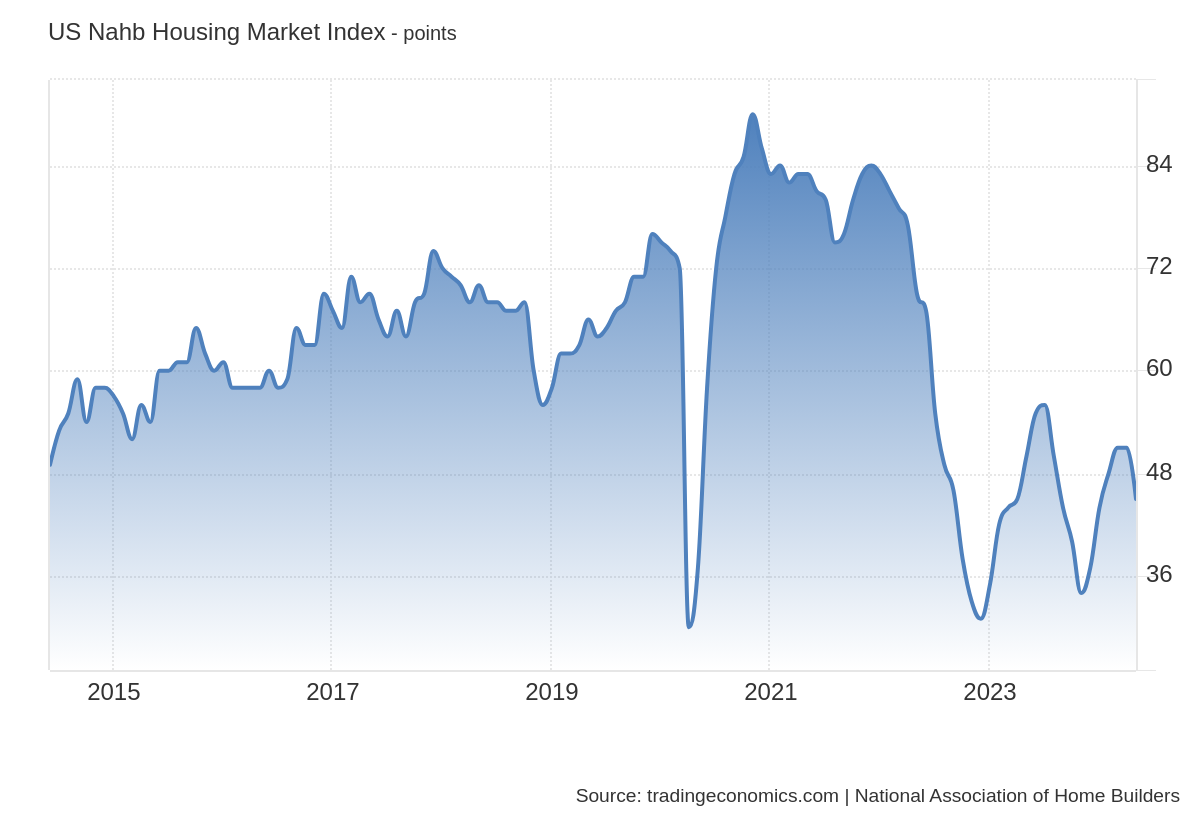
Will the recent move to lower mortgage rates help the builders? Of course, if rates keep going down. Not all homebuilders have extra profit margins to buy down rates so with all the data we have today, we are getting to the point where we are losing permits for both single-family and apartment construction.
As you can see, the housing data gets recessionary faster than the general economy does. This runs with every economic recession we have seen post World War II, so when people say housing leads us in and out of recession, this is what they’re talking about.
------------Read More
By: Logan Mohtashami
Title: Higher rates are impacting future housing production
Sourced From: www.housingwire.com/articles/higher-rates-are-impacting-future-housing-production/
Published Date: Thu, 16 May 2024 21:30:21 +0000
Did you miss our previous article...
https://trendinginbusiness.business/real-estate/a-retired-couple-trades-their-pennsylvania-horse-farm-for-beach-life-in-coastal-delaware
.png)





